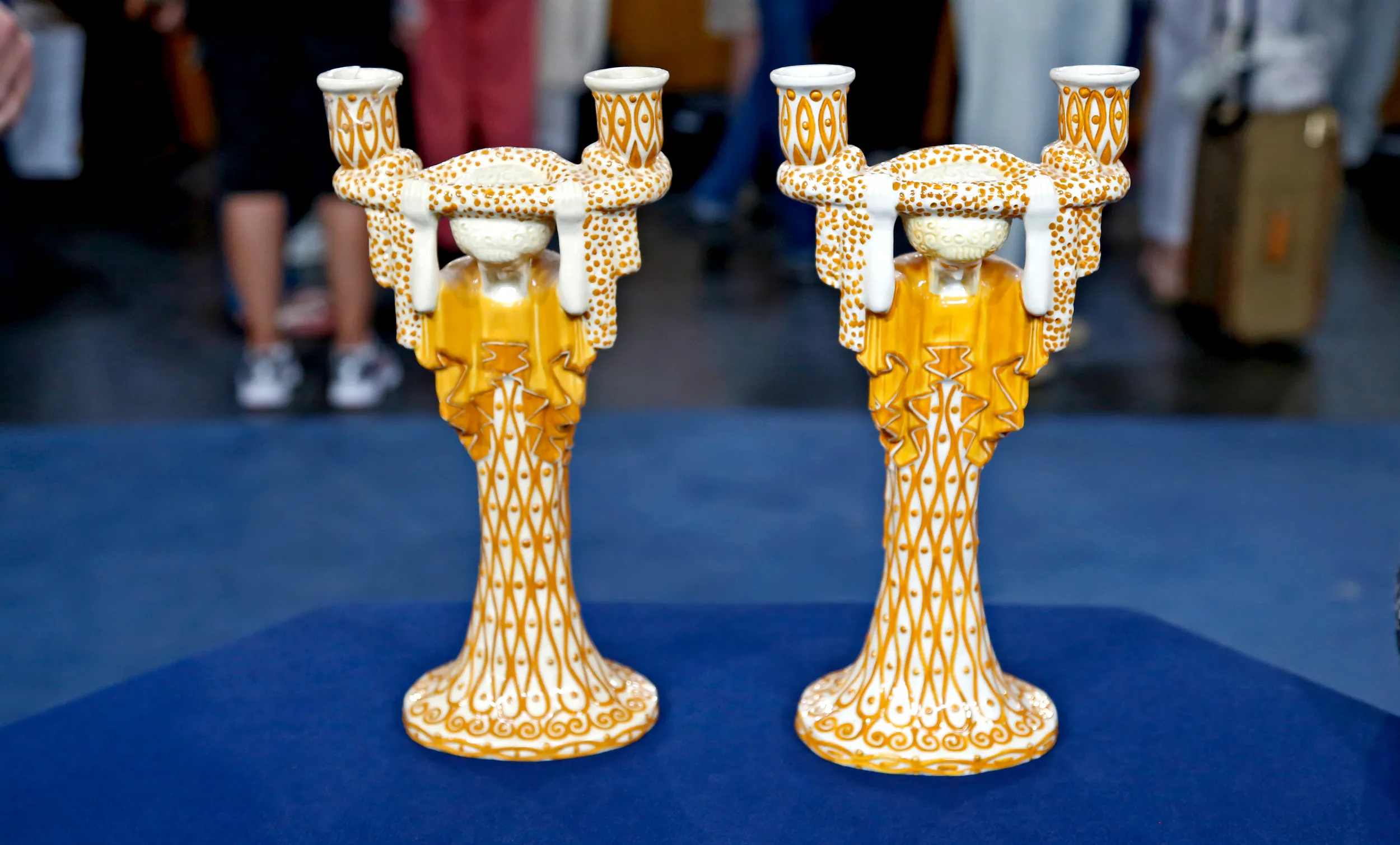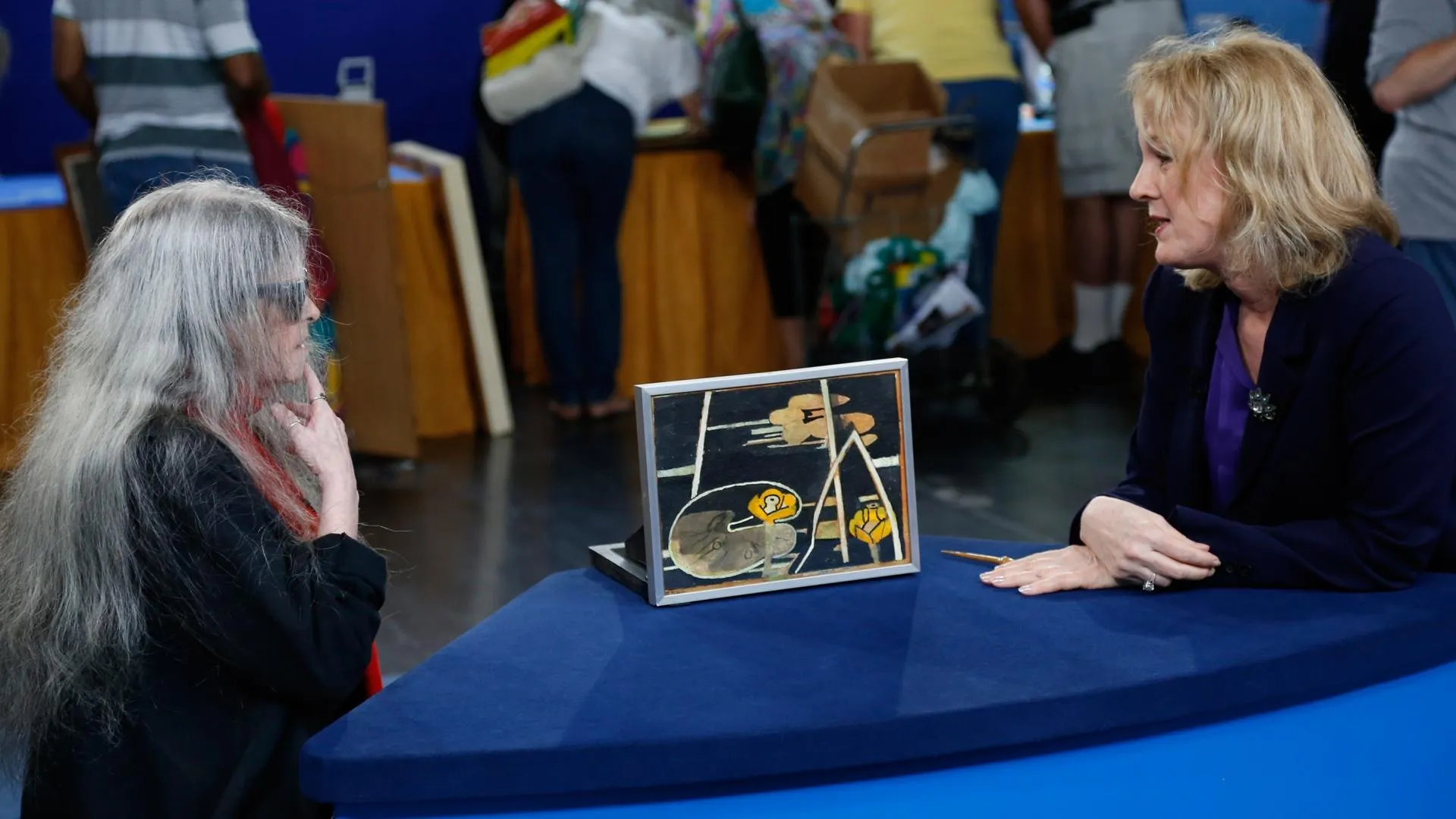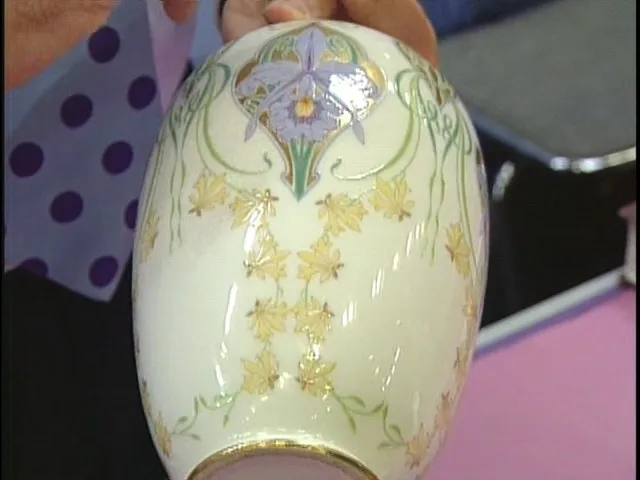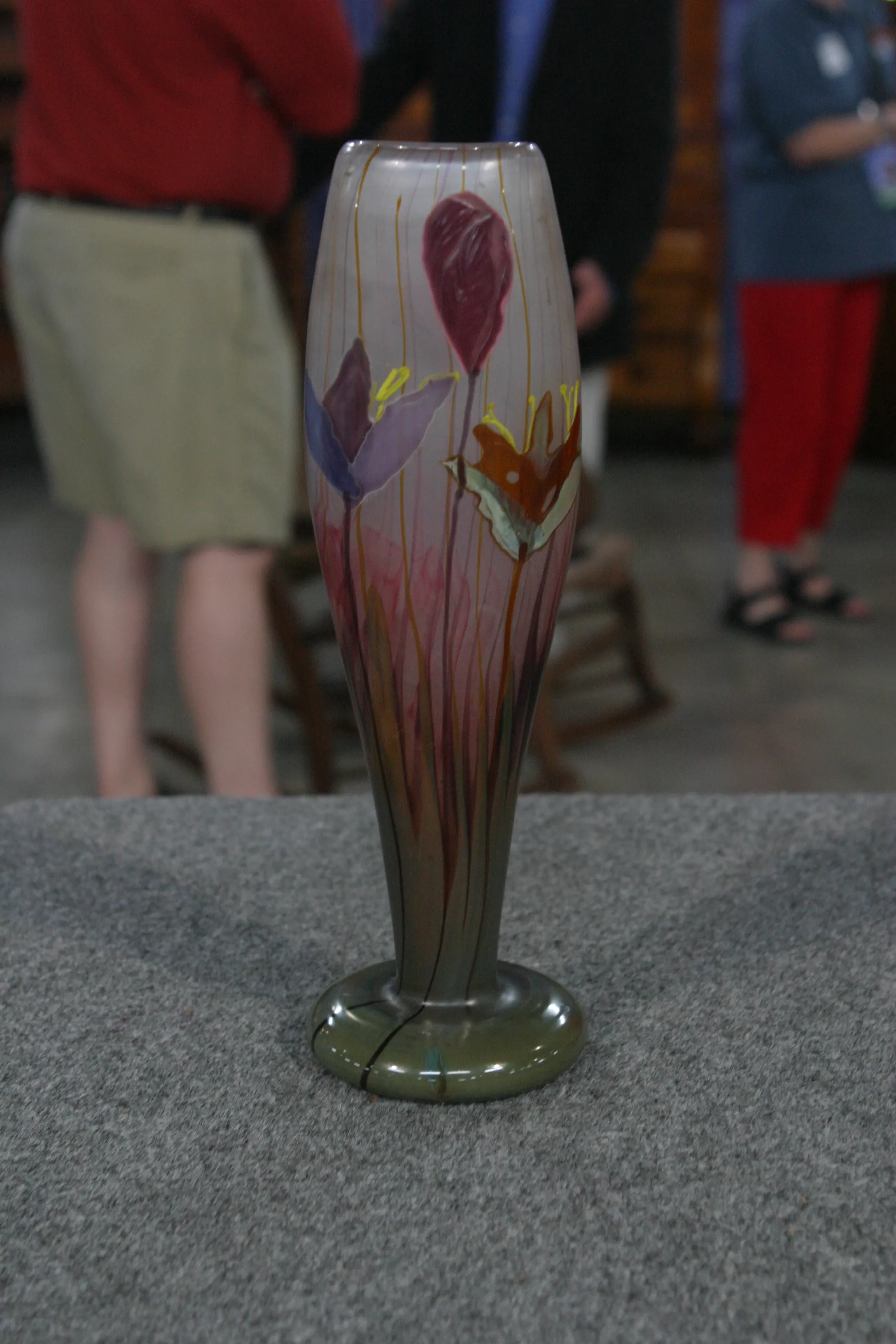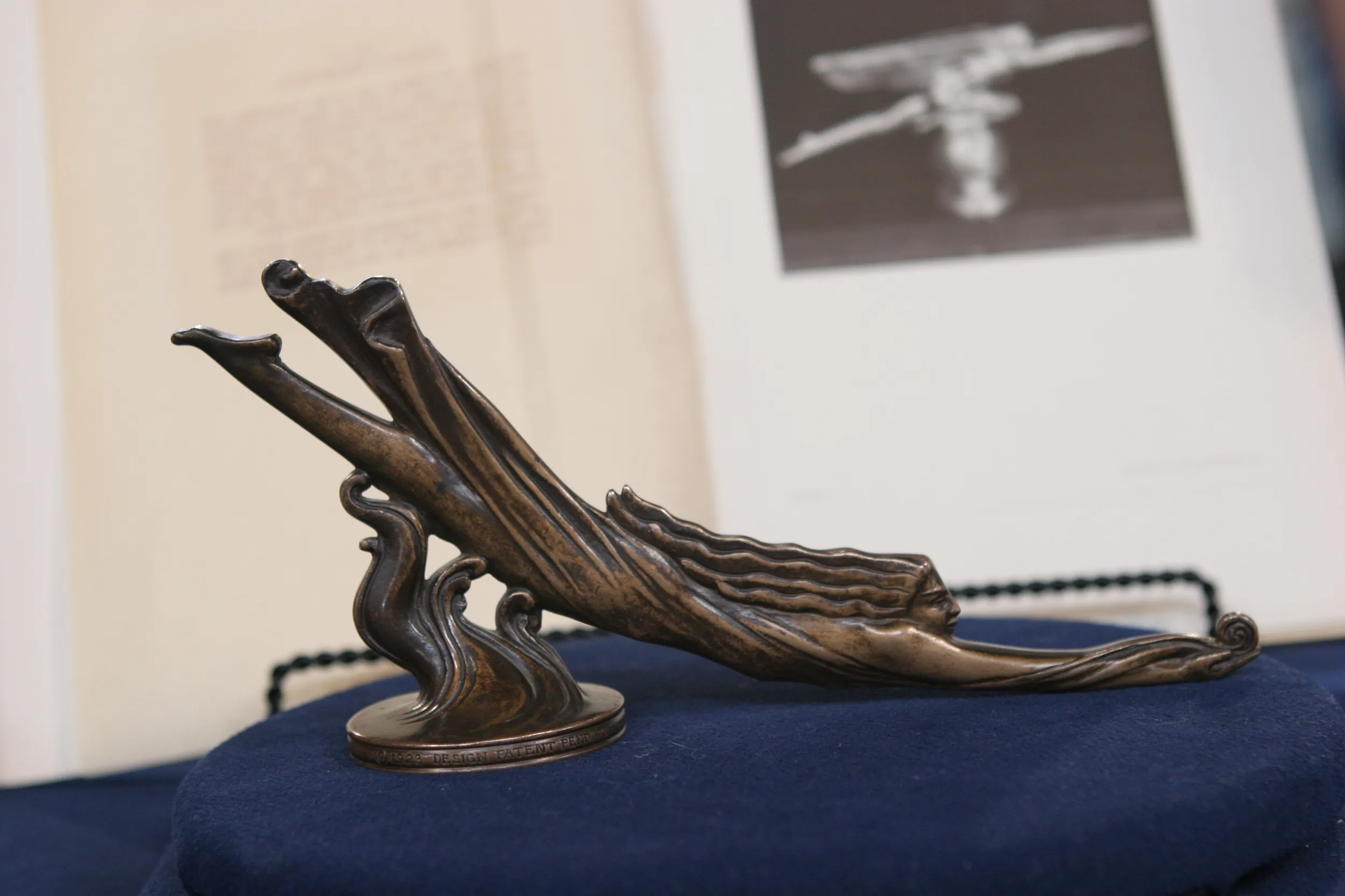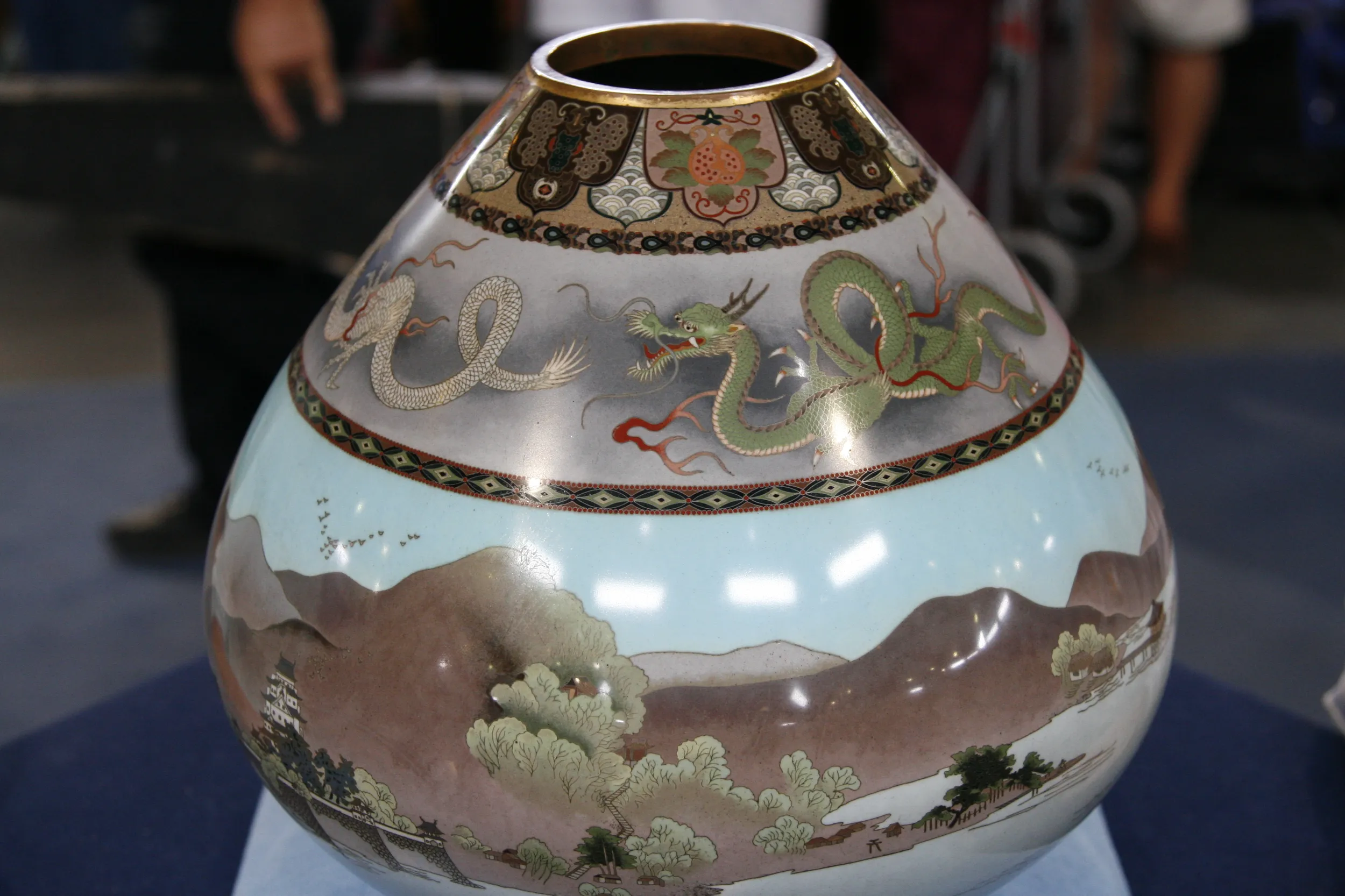GUEST: I brought in ceramic candlesticks that I inherited from my husband's great-aunt.
APPRAISER: Okay, and what do you know about the pieces?
GUEST: Well, looking at the mark on the bottom, it says, "Austria," and there were some maker's marks, so I went online and it looked like it came from a studio workshop in Vienna. I thought maybe Wiener Werkstätte, but it didn't appear like that to me.
APPRAISER: Have you ever had them appraised before?
GUEST: I took them to a dealer maybe a dozen years ago. He said that he thought maybe they were worth $500 to $1,000. I didn't know if that was retail or replacement value.
APPRAISER: Okay, good. And then also, you have a little condition problem up here, right?
GUEST: Yes, it came that way, and because the great-aunt lived in California, perhaps it fell in an earthquake. At least all the pieces are there.
APPRAISER: Okay, if I can just tip this up here, we have the mark here for Wiener Keramik, which is Viennese Ceramics. And then, of course, it says "Austria" here, as you know. Now, it also here on the bottom has a hole. So this was originally produced as a potential lamp. So, you could have used this as a candlestick, or you could have electrified it and had it as a lamp. But they are absolutely beautiful pieces. Now, Wiener Keramik was started around 1906 by Michael Powolny and Berthold Loeffler. I think that these were made before 1915, so that gives us between 1906 and 1915 as a manufacture date. The style is very much in the Viennese secessionist. And probably the best known artist in that whole world was Gustav Klimt. But again, absolutely gorgeous, figural, they really work on a number of different levels.
GUEST: Yeah.
APPRAISER: Maybe we can turn them around just so people can see the back, but they're just gorgeous all around. The coloration-- my colleagues and I were discussing this at the pottery table, and the coloration is very kind of typical of that area, Central Europe. And a lot of even the Czechoslovakian glass at the early part of the 20th century had this same kind of, like, orange, et cetera. Many of these figures are black and white. This one is more unusual with the coloration. The decoration to me is just wonderful. I know that you've had it appraised. Do you have any idea of value now?
GUEST: I don't know if European ceramics are something that are desirable here in America. I know I love them. I would guess they're probably in about the same value range.
APPRAISER: Okay, I would say that a fair or reasonable replacement value for this, even with the damage, would be $8,000 to $10,000.
GUEST: You're kidding me!
APPRAISER: No, these are wonderful.
GUEST: Wow! That's... that's amazing. It takes my breath away.
